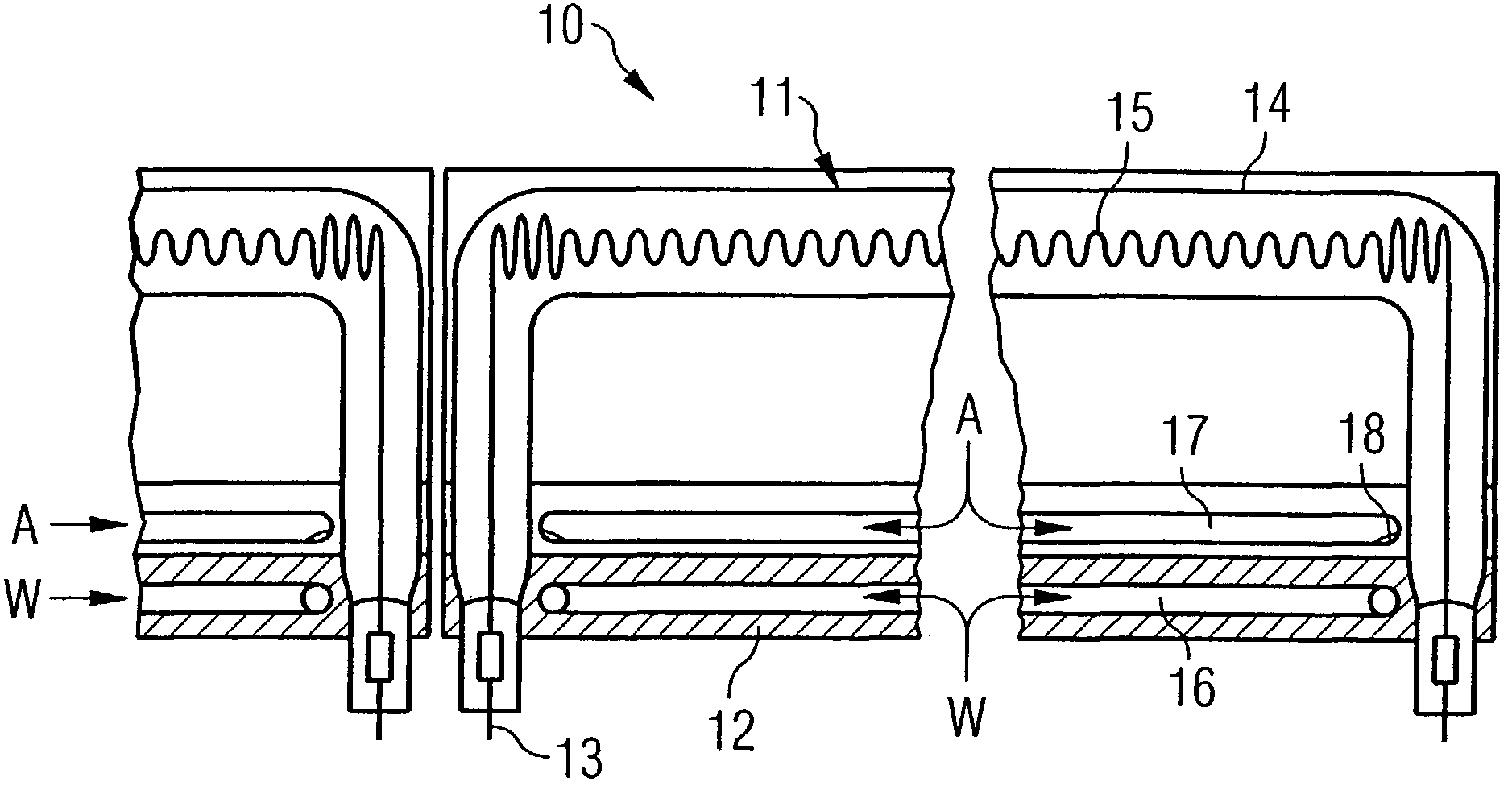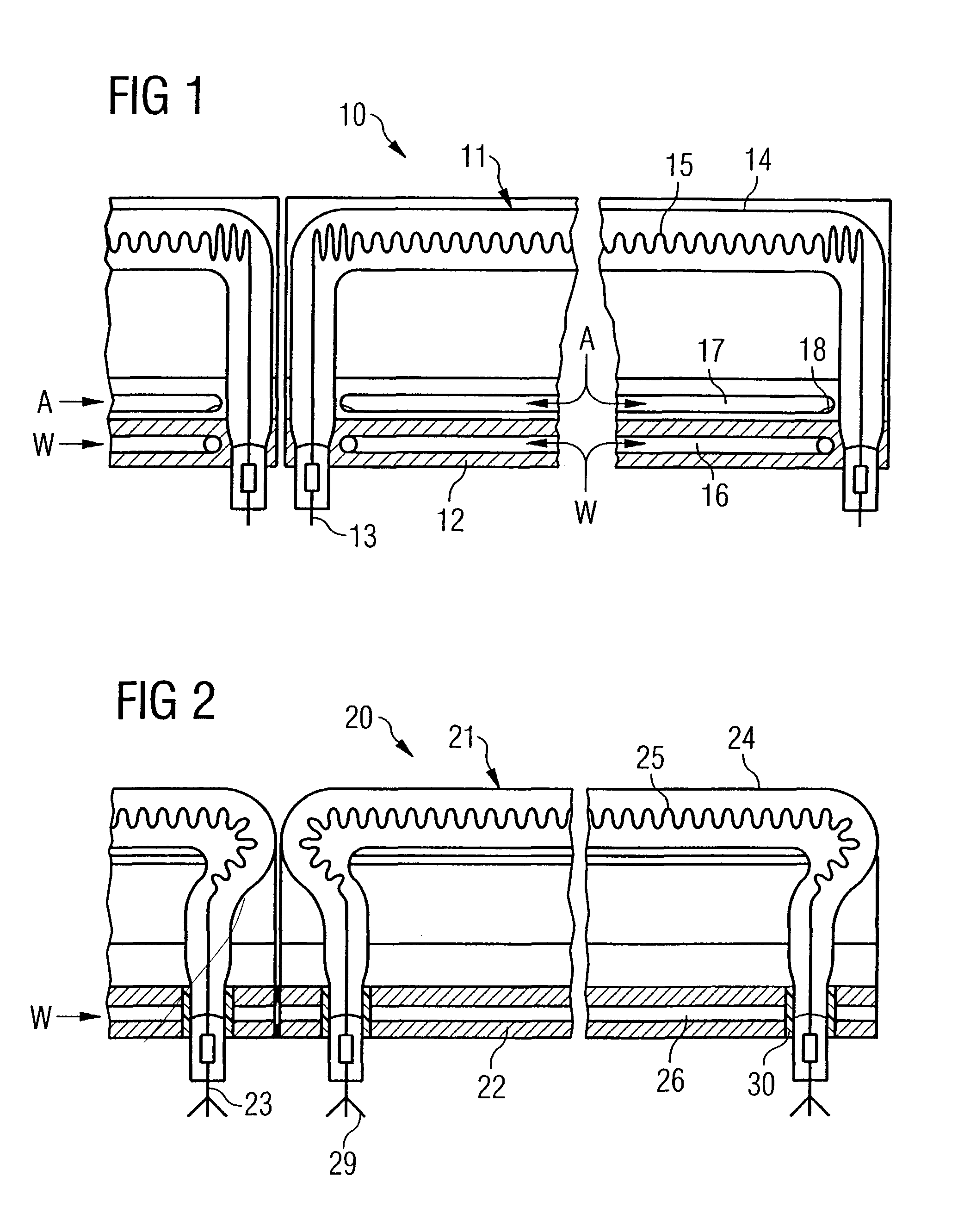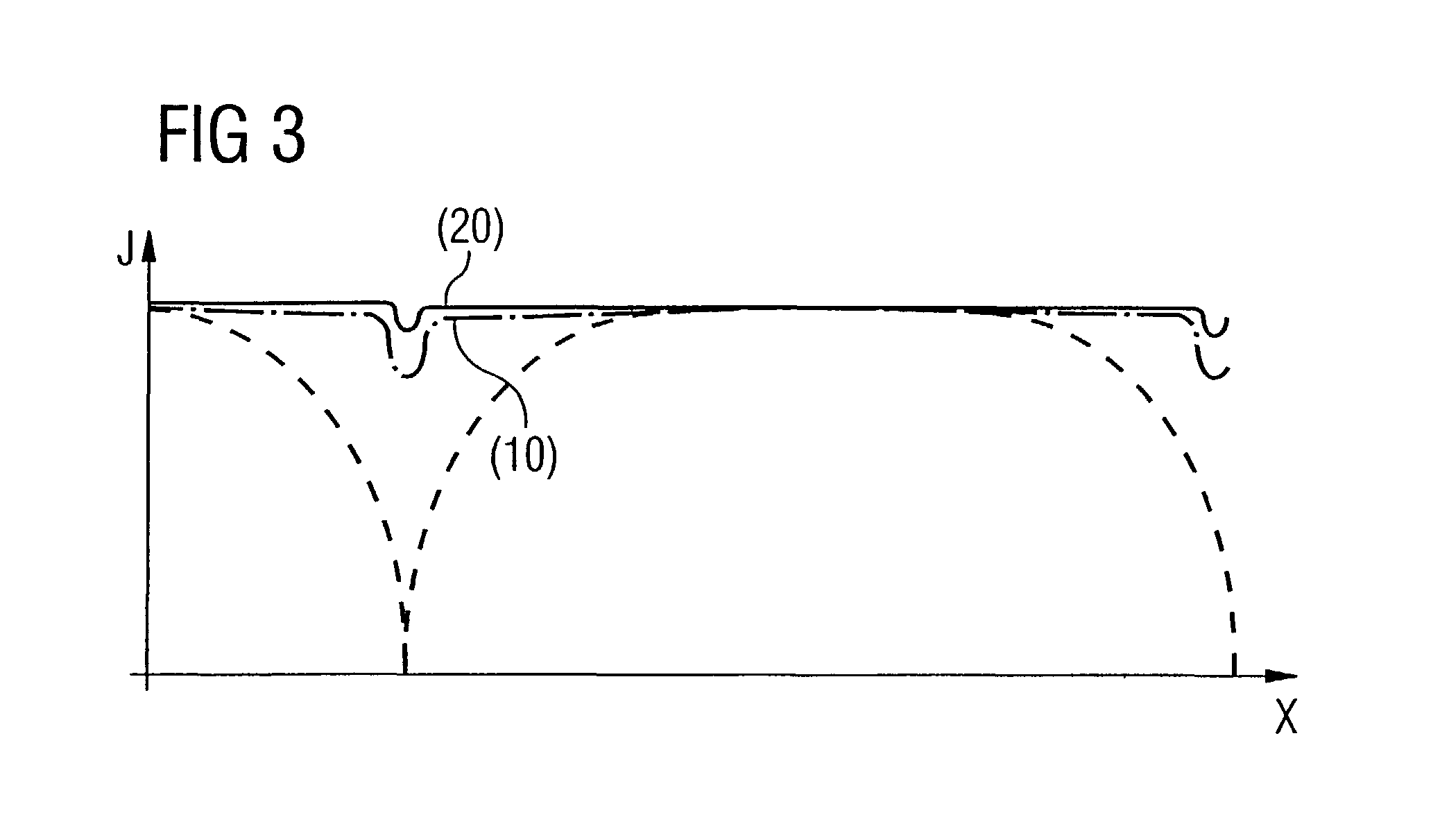Radiation source and device
a technology of radiation source and device, applied in the direction of optical radiation measurement, discharge tube luminescnet screen, instruments, etc., can solve the problems of reducing flux density, particularly severe problems, and difficult to produce individual halogen lamps of correspondingly large widths, and achieve reliable heat dissipation, high thermal conductivity, and high efficiency
- Summary
- Abstract
- Description
- Claims
- Application Information
AI Technical Summary
Benefits of technology
Problems solved by technology
Method used
Image
Examples
Embodiment Construction
[0026]FIG. 1 shows part of an NIR irradiation arrangement 10 for technological purposes, with a plurality of halogen filament lamps 11 disposed in a row extending in their long directions and aligned with one another, with each of which there is associated an elongated reflector 12 made of an aluminum extruded profile.
[0027]The basic structure of the reflector is known per se from the applicant's patent document EP 0 999 724 A2 and hence is not explained further here. In the following reference will be made only to special cooling devices disposed in the interior or the vicinity of the reflector.
[0028]As can be seen in the figure, the halogen filament lamp 11 has a glass body in the shape of a tube 14, which contains in its center an elongated spiral filament 15 and has at each of its two ends a connector pin 13. The lamp is operated at high voltage and therefore at an elevated operating temperature, above 2500 K and in particular above 2900 K, so that the radiation it emits has its...
PUM
| Property | Measurement | Unit |
|---|---|---|
| wavelength | aaaaa | aaaaa |
| wavelength | aaaaa | aaaaa |
| temperature | aaaaa | aaaaa |
Abstract
Description
Claims
Application Information
 Login to View More
Login to View More - R&D
- Intellectual Property
- Life Sciences
- Materials
- Tech Scout
- Unparalleled Data Quality
- Higher Quality Content
- 60% Fewer Hallucinations
Browse by: Latest US Patents, China's latest patents, Technical Efficacy Thesaurus, Application Domain, Technology Topic, Popular Technical Reports.
© 2025 PatSnap. All rights reserved.Legal|Privacy policy|Modern Slavery Act Transparency Statement|Sitemap|About US| Contact US: help@patsnap.com



